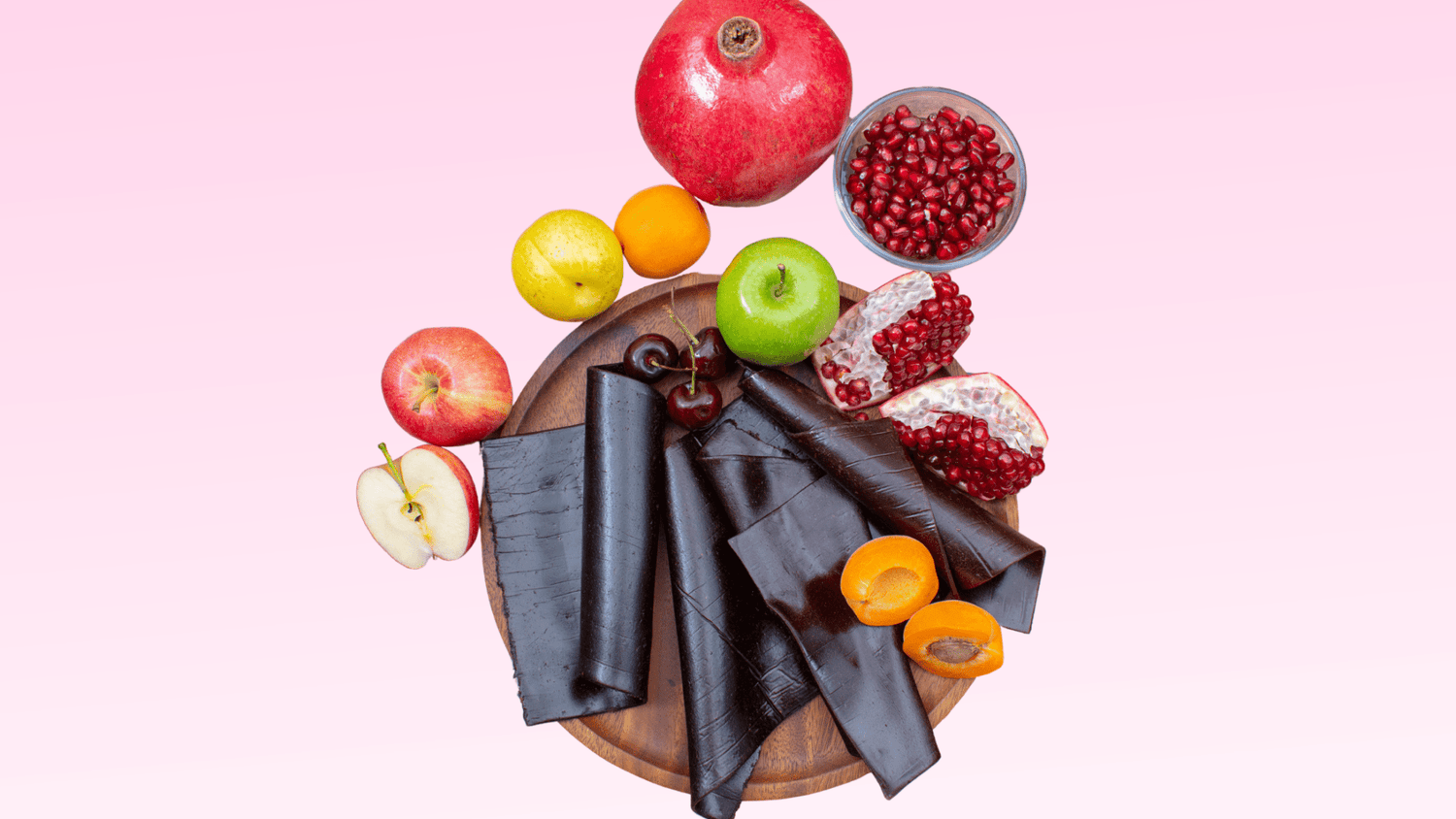Your cart is empty
Already have an account? Log in to check out faster.
Already have an account? Log in to check out faster.

Lavashak is a traditional Persian fruit leather made by slowly simmering seasonal fruits — most commonly plum, pomegranate, sour cherry, and barberry — then straining and drying the puree into thin, tangy sheets. It's naturally preserved, intensely sour, and deeply rooted in Iranian food culture.
In many Persian households, lavashak is a nostalgic staple — a childhood snack passed around on road trips, at school, or during Nowruz. For generations, it’s been handmade at home and sold by street vendors, often rolled into thick strips or cut into bite-sized squares, dusted with salt and chili.
At its core, lavashak is a celebration of fruit preservation, crafted without artificial additives and beloved for its bold, mouth-puckering flavor.
Lavashak has gone viral thanks to TikTok and Instagram, where creators are showcasing the snack in ASMR-style bite videos, bold flavor reviews, and aesthetic dessert mashups. From Persian food influencers to global foodies, the obsession is real.
The snack’s unique look and intense flavor profile make it perfect for short-form content:
Visually striking: Rich purples and reds, glossy textures, rustic shapes
Texturally compelling: Chewy, glossy, pliable — great for ASMR
Unexpected taste: Viewers are hooked by the “what-is-that” curiosity factor
Some creators even drizzle lavashak with pomegranate molasses, wrap it around fruit, or eat it alongside ice cream and savory nuts for an East-meets-West snack plate.
As social media buzz has grown, so has real-world demand:
Retailers are seeing lavashak sales spike by over 200%
Sour, authentic Persian flavors are trending in both grocery and gourmet channels
Pomegranate molasses and sour fruit-based products are gaining popularity as a result
This is part of a broader movement: Gen Z and Millennial shoppers are turning to global flavors, ancestral foods, and authentic cultural snacks — especially those with health-forward or nostalgic appeal.
Lavashak isn’t a trend — it’s a thousand-year-old tradition.
In ancient Persia, fruit was abundant but seasonal, so methods were developed to preserve it through drying, fermentation, and slow cooking.
Lavashak was a form of natural preservation — no refrigeration, no waste, and no added sugar required.
It’s deeply intertwined with Iranian terroir — each region has its preferred fruits and style of lavashak, from tart pomegranate rolls in the North to spiced plum leathers in the South.
Even today, Persian grandmothers (“maman bozorgs”) still make it from scratch in the summer, letting the sun dry the mixture on flat trays in their courtyards.
The modern lavashak revival is inspiring new ways to enjoy it:
Slice it into ribbons and place it over vanilla ice cream with a drizzle of pomegranate molasses and roasted pistachios.
Its intense tartness pairs beautifully with creamy cheeses like brie or labneh, dried nuts, and seeded crackers.
Grind lavashak into a powder and mix with chili or sumac for rimming glasses or seasoning cocktails/mocktails.
Add lavashak strips to fruit platters, dried apricots, and roasted seeds for a Persian-inspired grazing board.
It’s addictive on its own — no explanation needed.
At Sadaf, we’ve been bringing authentic Persian flavors to American kitchens since 1982. Our lavashak is:
✅ Made using traditional methods
✅ Crafted from real fruit
✅ Boldly tart, never overly sweet
✅ Free from artificial additives
✅ Packaged for convenient snacking
We honor the ancestral knowledge behind this snack while keeping it accessible for modern lifestyles.
Lavashak’s moment in the spotlight isn’t just about viral videos — it’s a gateway to Persian culture, history, and flavor. It reflects the growing demand for real, bold, heritage-rich foods that tell a story and wake up your taste buds.
So next time you see a strip of sour fruit leather on your feed, know this: it’s not just a trend. It’s a tradition — and we’re proud to share it.